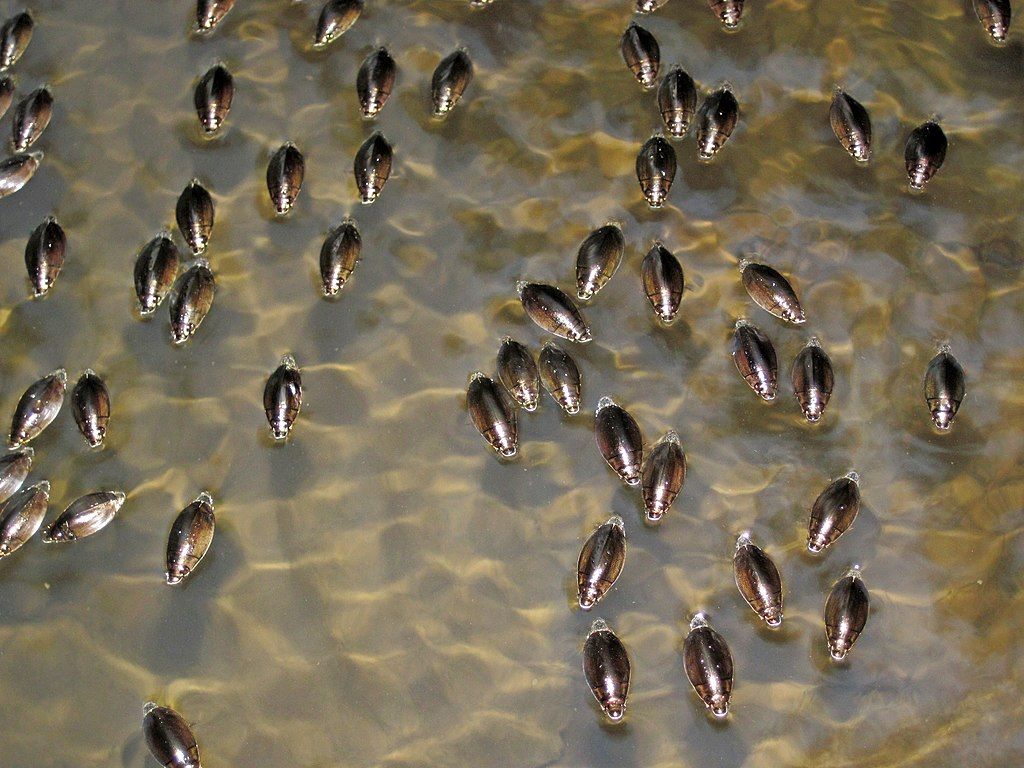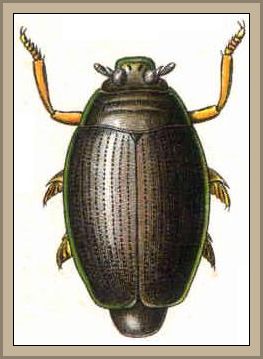
24 August 2020
This is the time of year to see whirligigs, those shiny water beetles that spin and swim on freshwater surfaces. They gather in large aggregations in late summer and fall and are hard to miss in August.
When you find an aggregation it may contain only one species or more than a dozen. With 700 species in the Gyrinidae family you have to be an expert to figure out who’s who.
Whirligigs swim on the surface, sometimes quite fast, or dive when threatened or to lay eggs.
They have amazing adaptations to fit their lifestyle:
- Their compound eyes are divided into above-water and below-water halves which are able to see best in each environment. They watch for predators (insects, birds and fish) and prey (live or dead insects).
- Their back legs are short paddles for swimming fast. Their front legs are long for grasping prey. The males’ front legs have suckers to hang onto females when they mate.
- Whirligig beetles cannot walk but they can fly. Their wings carry them to other ponds when their own location dries up.
- Adults need to breathe so they carry a bubble of air under their elytra when they dive. The bubble is positioned at the back end of the bug where their breathing parts are located.
See their breathing bubble in this PBS video about nature’s scuba divers:
(photo and image from Wikimedia Commons; click the caption to see the original. videos embedded from YouTube)
p.s. Just for laughs, here’s a whirligig that you can see at any time of year. 😉
